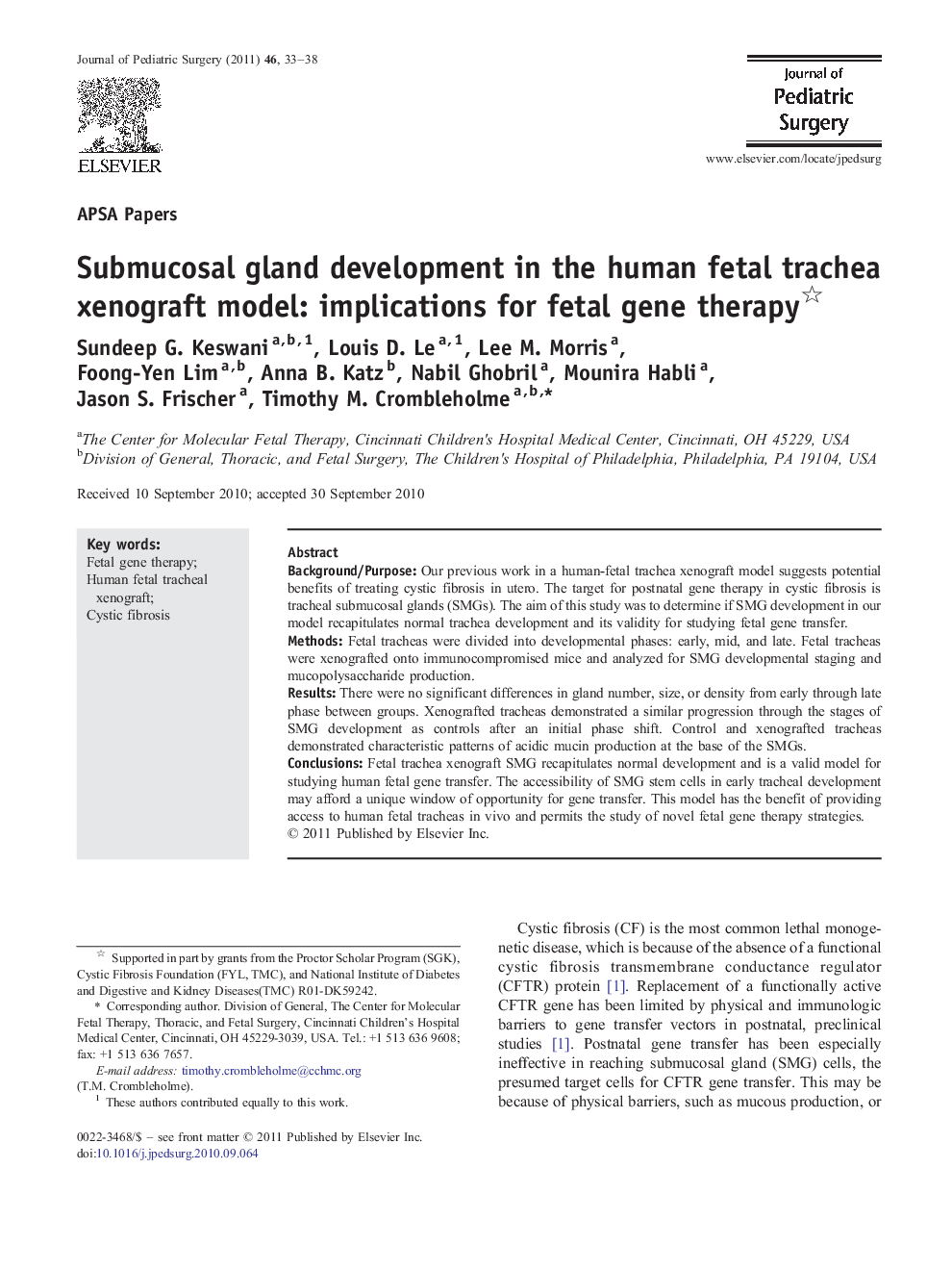| Article ID | Journal | Published Year | Pages | File Type |
|---|---|---|---|---|
| 4157935 | Journal of Pediatric Surgery | 2011 | 6 Pages |
Background/PurposeOur previous work in a human-fetal trachea xenograft model suggests potential benefits of treating cystic fibrosis in utero. The target for postnatal gene therapy in cystic fibrosis is tracheal submucosal glands (SMGs). The aim of this study was to determine if SMG development in our model recapitulates normal trachea development and its validity for studying fetal gene transfer.MethodsFetal tracheas were divided into developmental phases: early, mid, and late. Fetal tracheas were xenografted onto immunocompromised mice and analyzed for SMG developmental staging and mucopolysaccharide production.ResultsThere were no significant differences in gland number, size, or density from early through late phase between groups. Xenografted tracheas demonstrated a similar progression through the stages of SMG development as controls after an initial phase shift. Control and xenografted tracheas demonstrated characteristic patterns of acidic mucin production at the base of the SMGs.ConclusionsFetal trachea xenograft SMG recapitulates normal development and is a valid model for studying human fetal gene transfer. The accessibility of SMG stem cells in early tracheal development may afford a unique window of opportunity for gene transfer. This model has the benefit of providing access to human fetal tracheas in vivo and permits the study of novel fetal gene therapy strategies.
